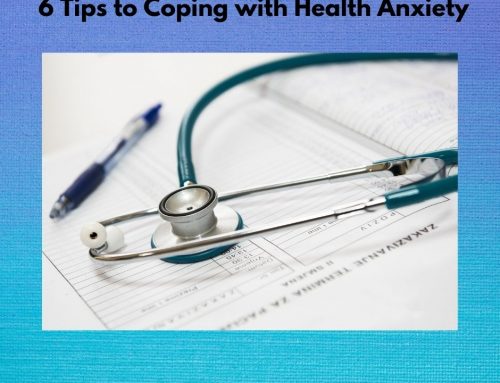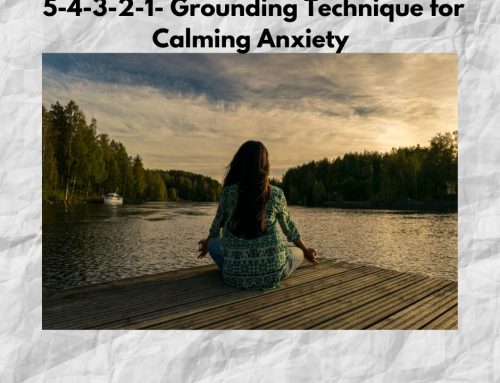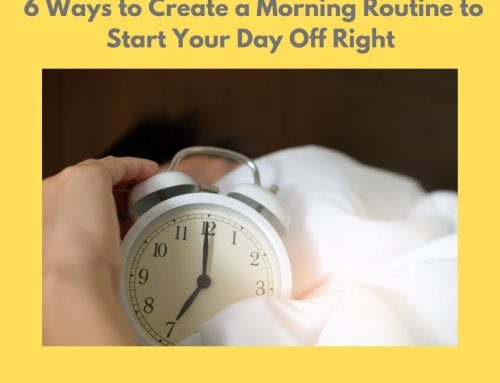With everything that’s going on around us these days, it’s natural to feel on edge. When I get anxious, I tend to carry that anxiety in my muscles. It took me awhile to identify that, but when I finally did, it made managing it a lot easier. It started with pains in my jaw and my face, which led to headaches. I used to clench my teeth and grind them at night. The clenching was the worst. It really exasperated my feelings of anxiety. In fact, I even had a mouth guard made for myself. The mouth guard ended up being a godsend for me. I found that when I put it in, it prevented me from clenching my teeth. That one small step, instantly relaxed me. Strange I know.
Progressive muscle relaxation (PMR) is an anxiety reducing technique first introduced by American doctor Edmund Jacobson in the 1930’s. The method involves alternating tensing and relaxing all of your body’s main muscle groups. If you suffer from anxiety, your muscles are likely tense much of the time and this technique will give you greater control over how your body responds to your thoughts and feelings. It’s a great technique for relieving the stress that tends to creep up in our bodies. Relieving the tension in our muscles, will help ease stress and anxiety. And the best thing of all, it’s portable, easy and fast acting!
Progressive muscle relaxation can be done anywhere, anytime. It’s easy to modify to every situation and surrounding. However, under ideal circumstances, it’s helpful if you can set aside 15-20 minutes. Find a quiet place where you can complete the exercise without being disturbed; either lie on the floor or relax in a chair with your hands resting gently in your lap or on the arms of the chair. Start by taking a few slow breaths. Slowly breathe in through your nose and exhale slowly through your mouth. Pay attention to your body and how it feels.
- Let’s start with your feet: slowly squeeze the muscles in your feet and toes. Curl your toes downward. Tighten the muscles as much as you can and hold for 10 seconds. Slowly release the tension while you keep breathing slowly in through your nose and out through your mouth.
- Now move to your legs: Stretch your legs out in front of you and point your toes. Squeeze the muscles in your quadriceps and calves. Hold it for 10 seconds and then relax and release the tension. Let your legs and their muscles. Keep breathing deeply in through your nose and out through your mouth.
- Let’s focus on hands and arms: Make a fist with your hands and squeeze as tight as you can for 10 seconds and then relax them. Notice how your muscles feel when the tension is being released. Breathe slowly in through your nose and out through your mouth. Stretch your arms up above your head; reach as high as you can and hold the stretch for 10 seconds. Then let your arms go and hang at your side. Relax your arms and notice how peaceful you are. Slowly breathe in through your nose and out through your mouth.
- Now on to your neck and shoulders: Increase tension in your neck and shoulders by pulling your shoulders up to your ears. Hold it for 10 seconds and then relax and feel the tension disappear. Slowly breathe in through your nose and out through your mouth.
- It’s time to work your stomach: Pull in your stomach muscles, suck them all in and hold it. Hold for 10 seconds and then release the muscles. While releasing notice how relaxed you feel. Slowly breathe in through your nose and out through your mouth.
- Let’s work your jaw: Tense the muscles in your jaw by stretching your lower jaw forward and holding for 10 seconds. Then release the tension while noticing how you’re feeling. Slowly breathe in through your nose and out through your mouth.
- Finally, your face: Wrinkle up your face as much as you can. Squeeze the muscles in your forehead, your nose, mouth and eyes. Notice how it feels as the muscles get tighter. Hold it for 10 seconds and upon release, notice the calm feeling that takes over. Slowly breathe in through your nose and out through your mouth.
Enjoy how you’re feeling. Your body should feel more relaxed and calmer. Your mind should be clearer and more at peace. Take one last slow breath in through your nose and out through your mouth.
Progressive Muscle Relaxation is a helpful intervention. Only through practice can you become more aware of your muscles and how they respond to stress and anxiety. Awareness is the key. Once you understand where in your body you primarily carry your worry, you can consistently practice relaxing those muscles and releasing the tension within them.









